Delete the Telegram. It makes terrorists out of Ukrainian children (infographic)
We have collected all the reports by Security Service of Ukraine on terrorist attacks and analyzed them. The number of terrorist attacks committed by children recruited via Telegrams is growing rapidly.
15-year-old Anton received a voice message in a Telegram from a stranger. After politely greeting him, the man's voice said that he was looking for those who wanted to make easy and quick money. The job was to find and set on fire any cars "green, khaki, or with crosses." Finding a car, filling it with fuel, setting it on fire, and getting paid seems like a something simple. Fortunately, the guy shared this recording with his parents. But this is not always the case. A real wave of arson and bombings has recently hit Ukraine, and youths and minors play a key role in this.
If we create an average portrait of a familiar arsonist or bomber, we will see a very young person aged 16 to 20 living somewhere on the periphery. He will most likely be a resident of the Kyiv, Odesa, Dnipro, or Kharkiv regions.
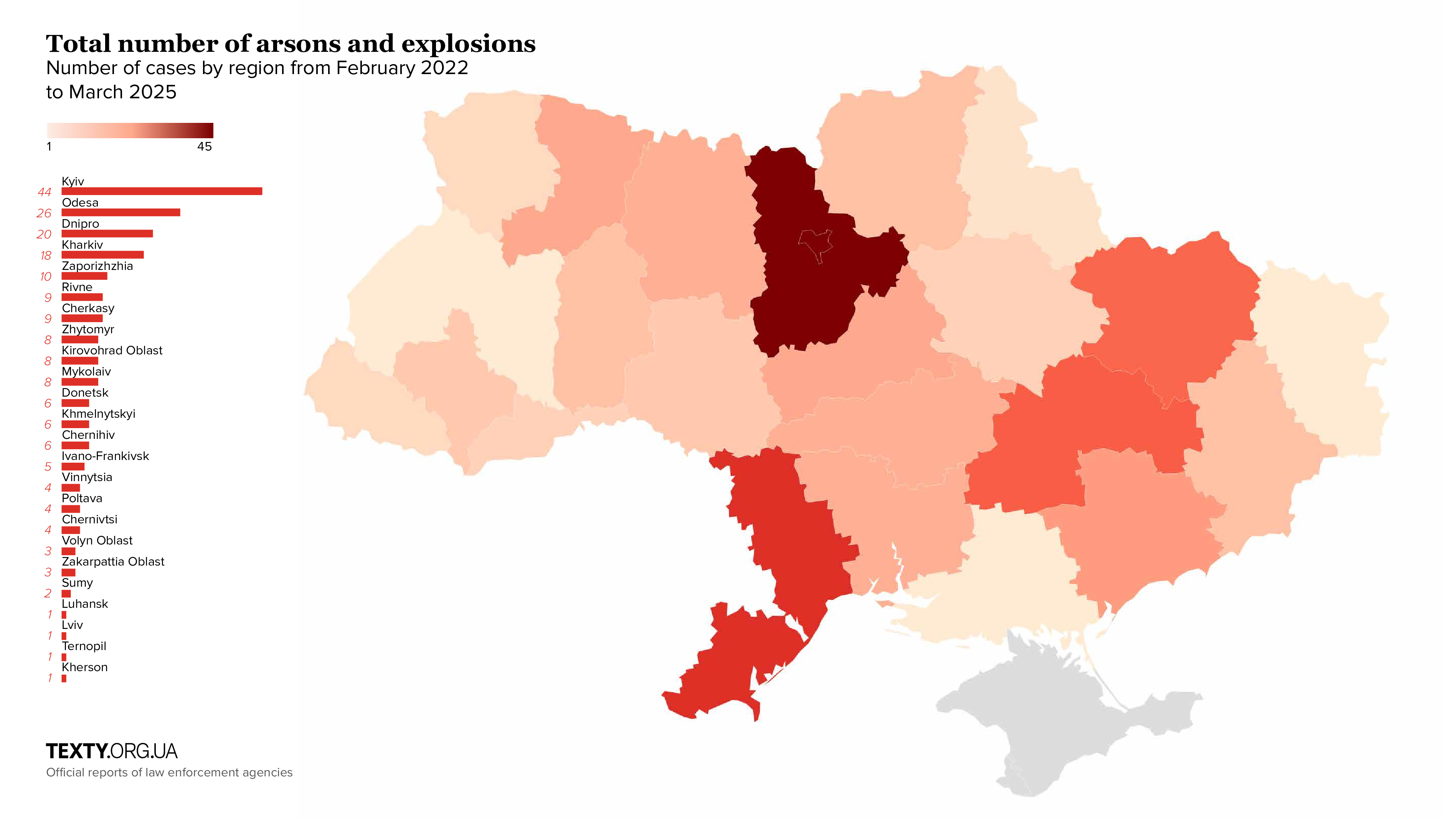

As you can see from the map, the Kyiv oblast is the leader in terms of the number of terrorist attacks. However, this region is home to the largest number of people.
On average, the picture may not differ much by region. It is impossible to make a map showing the number of terrorist attacks per 10,000 residents of a region because it is not known how many people live in the frontline regions.
There is also a certain probability that a notional terrorist will be drug-addicted or unemployed and looking for a quick buck. But this was not always the case.
In 2022-2023, a slightly different picture could be observed.
First, the number of terrorist attacks was many times less. Secondly, their perpetrators were often radically different in age and experience from the current ones. For example, at the beginning of the full-scale invasion, Russia activated all its agents — people who had been recruited in previous years and were waiting for their time.
Very often, personal contacts and family ties were used for recruitment. For example, there was a case when a Russian general recruited his classmate in Odesa. Or when a Ukrainian recruited by the Russians was blackmailed by imprisoning his entire family in the occupied territories and subjecting them to torture.
Representatives of various pro-Russian organizations and parties were also widely used. And, of course, criminals — the Russians have always worked with them.
At some point, both agents and members of various pro-Russian organizations began to run out. Then the Russians increasingly began to resort to other tactics of recruiting to the ranks of terrorists. Although they also used drug addicts to commit terrorist acts during the first phase of Russo-Ukrainian war.
Underage terrorists
Instead of the ideas of the "Russian world" and promises of career growth in the event of occupation, Russians have recently been focusing exclusively on money.
If we read the reports of Security Service of Ukraine over the past year and a half, we will almost always find a mention that the participants in the terrorist attacks were looking for quick money. The shift in focus to money allowed the Russians to scale up their subversive activities. It is not a pity to blow up such agents. And there is no need to exchange them for Ukrainian prisoners.
The Russians have reached people who, on the one hand, are chronically in need of money here and now and, on the other hand, are not smart enough to realize the consequences of doing so. We are talking about drug addicts, the unemployed, and criminals. Another category, unfortunately, is young people, very often under the age of 18. Of course, we are not talking about everyone, but only those who succumbed to the tricks and persuasion of recruiters.
There can be many internal motivations — from the fact that "finally someone paid attention to me" to difficult relationships with parents who are tired of worrying about their relatives at the frontline and are therefore irritable and can shout at their children to a banal desire to make money and show off something expensive.
While Russians have worked with criminals and drug addicts before, recruiting very young people or even minors for terrorist attacks is a know-how of recent years.
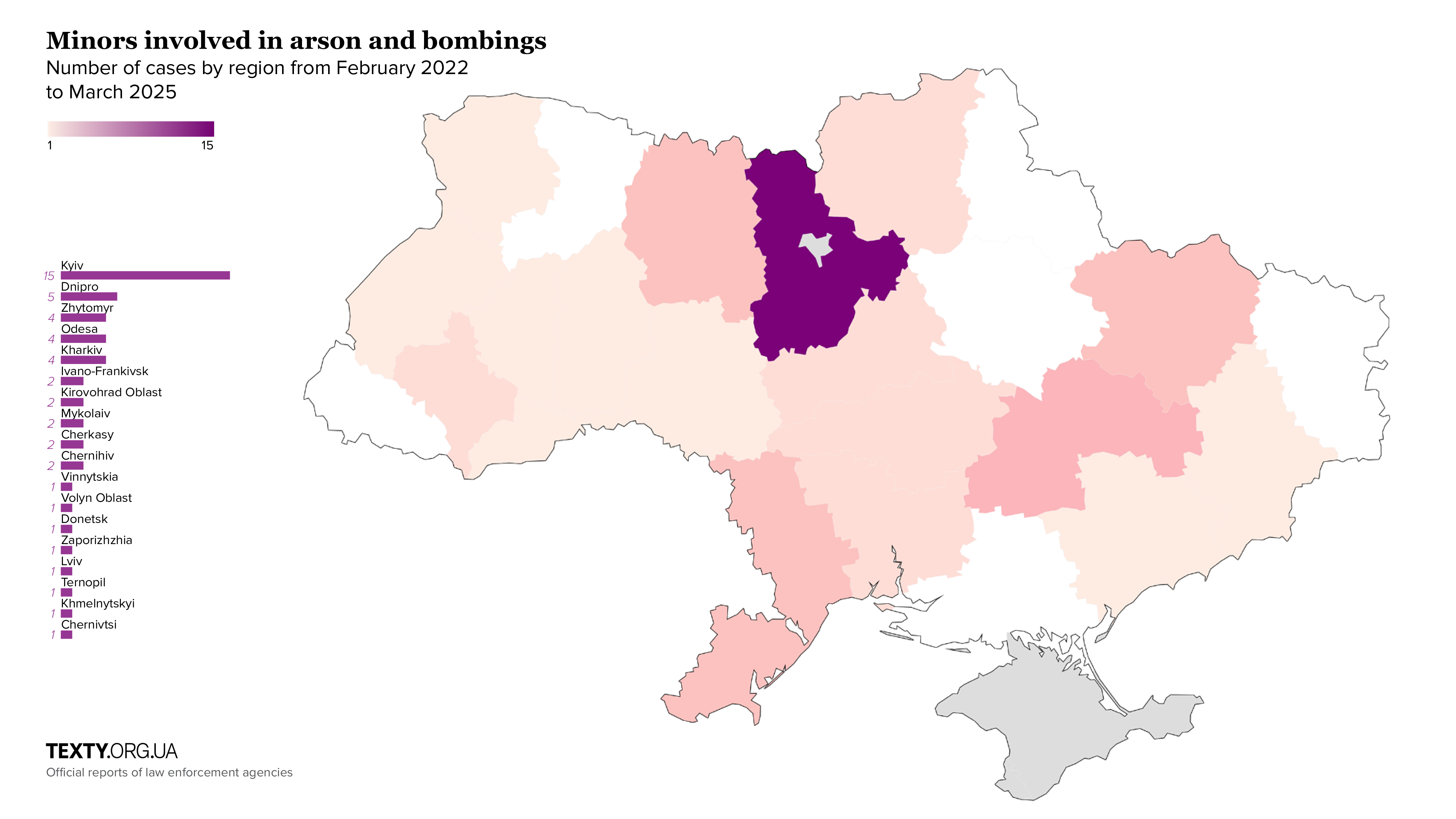

The Russians have always used children. But they used to play an auxiliary role - to call with threats to blow up various administrative buildings and public places, to spy on the Ukrainian military and equipment.
Now, the situation has worsened. Minors are being involved not only in car arsons or destruction of infrastructure but also in the preparation of terrorist attacks or even participation in them as direct perpetrators.
Russians are choosing more and more effective ways to reach Ukrainian children. They use various social networks, especially Telegram, to do so. Texty.org.ua has already written about telegram channels that openly post prices for committing a terrorist act (read more here). It seems that working with children is a priority for the administrators of such resources.
Recruiters work according to a well-established algorithm: the promise of money for a seemingly simple crime - promoting Russian propaganda, setting fire to military vehicles, or, for example, relay cabinets on railroad tracks. This is where most of the recruits end up in law enforcement. But some of them are not caught and continue in the same spirit. Or they are even assigned more serious tasks.
It is extremely difficult to get off this path, and the curator starts blackmailing
Experience has shown that it is extremely difficult to get off this path: even if a young person plans to "retire," the curator begins to blackmail him or her by leaking information about criminal activity to law enforcement.
Russians are constantly improving their methods of recruiting terrorists among young people and minors. Not long ago, their enemy agency advertised their telegram channels and waited for the perpetrators to come to them, but now they are resorting to more aggressive "marketing." As mentioned, they send voice messages via Telegram to random children.
Targets
The Russians have a list of targets for terrorist attacks. They can be divided into three groups. One of them, and probably the bloodiest, is terrorist attacks in public places, administrative buildings, and shopping malls.
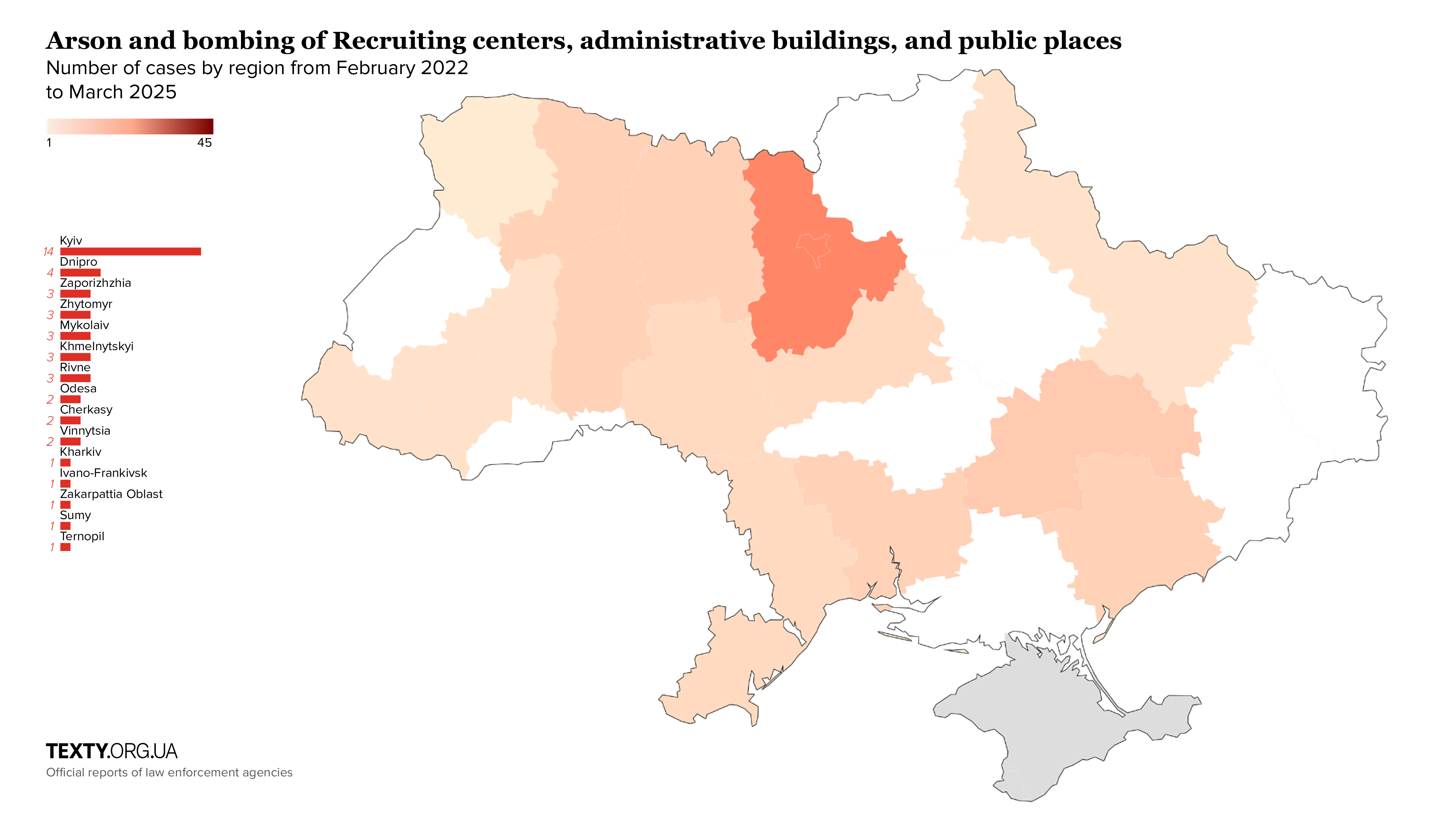
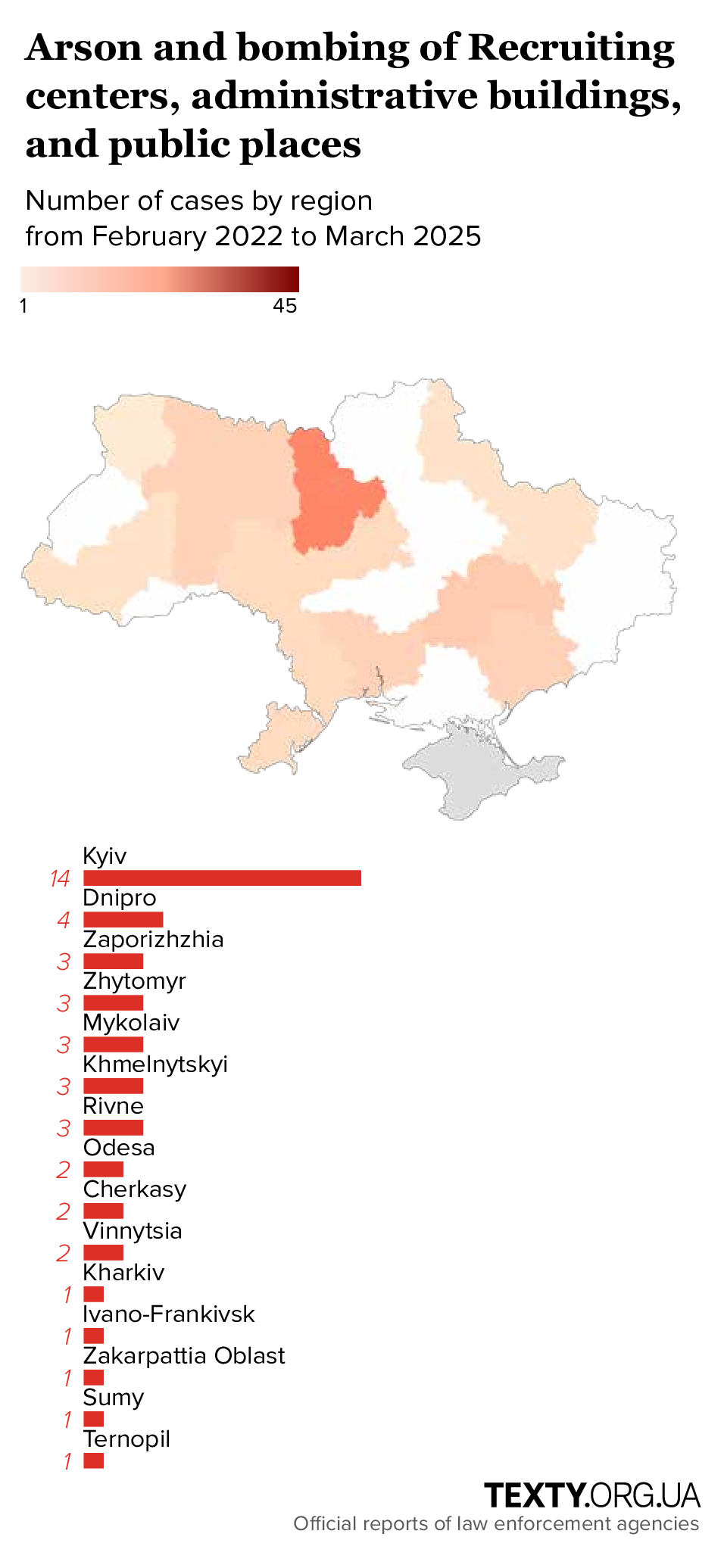
These are mainly the detonations of improvised explosive devices with victims somewhere in a crowded place, in or near an administrative building, or the bombing of shopping centers. Or, as a lightweight option, fire administrative buildings or shopping centers at night.
The next group of targets of Russian terrorist attacks is the military itself and its equipment, as well as law enforcement officers.
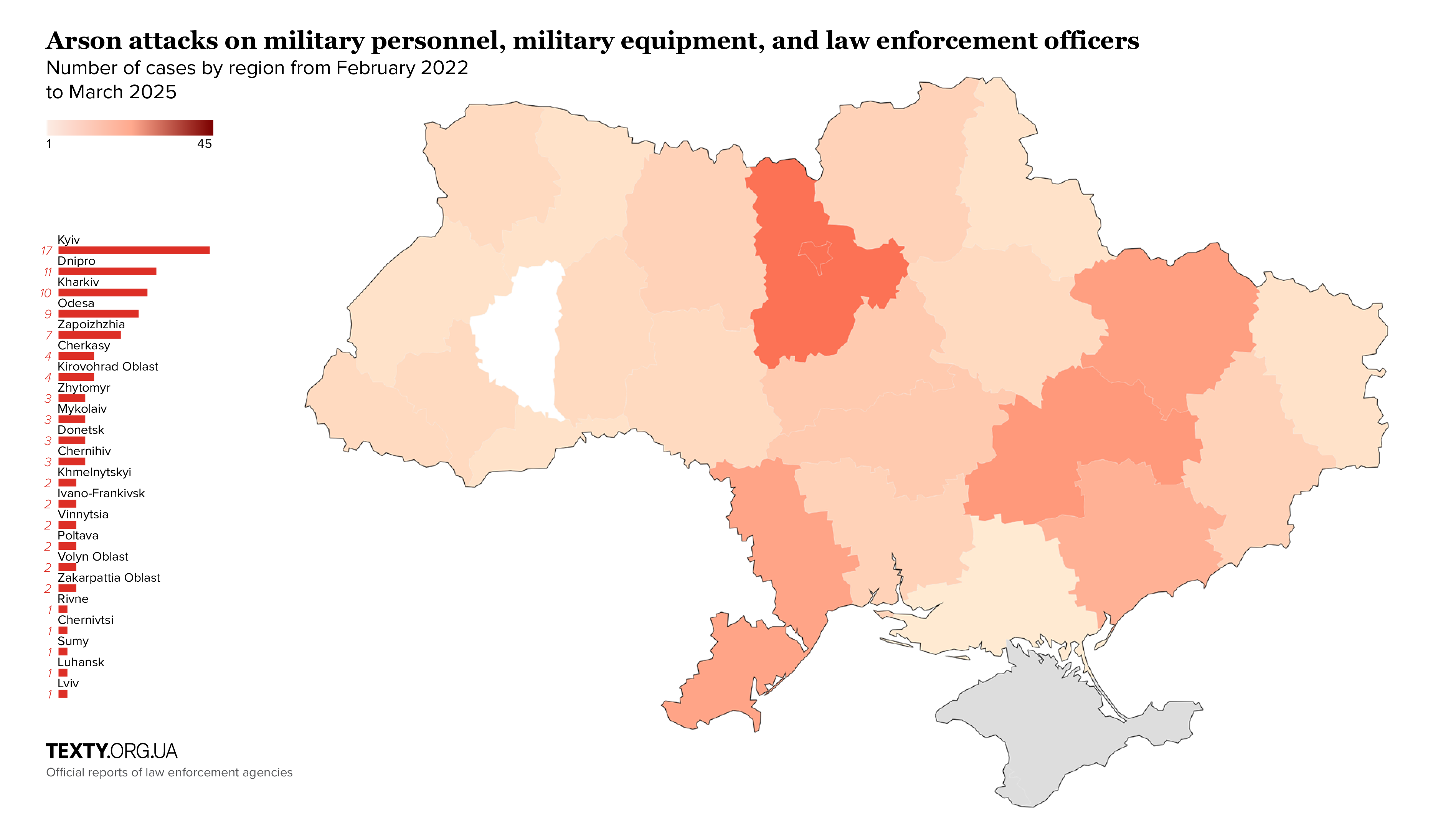
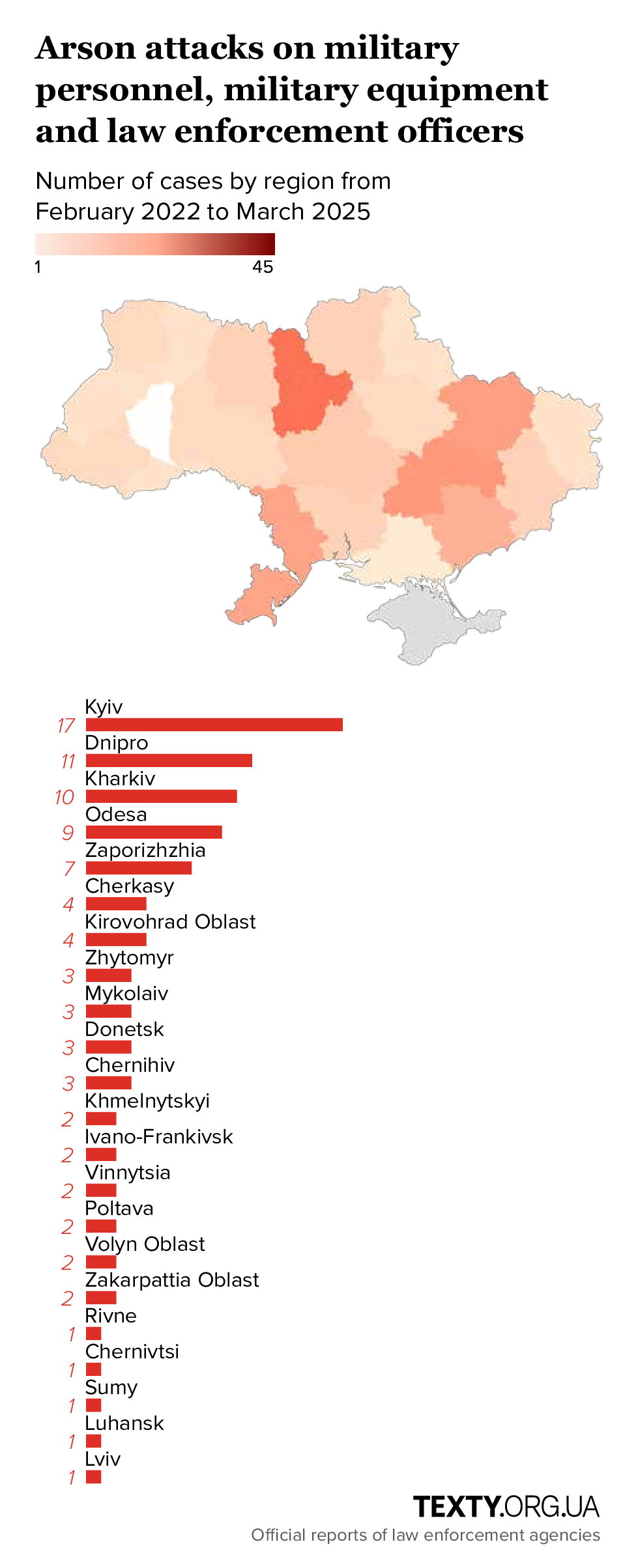
Of course, arson attacks on military equipment are most common here. Although the lives of the military themselves are sometimes also targeted. In particular, they try to blow up cars with people.
The last group is infrastructure facilities. We are talking about Ukrzaliznytsia (UZ), energy facilities, and mobile communication systems.
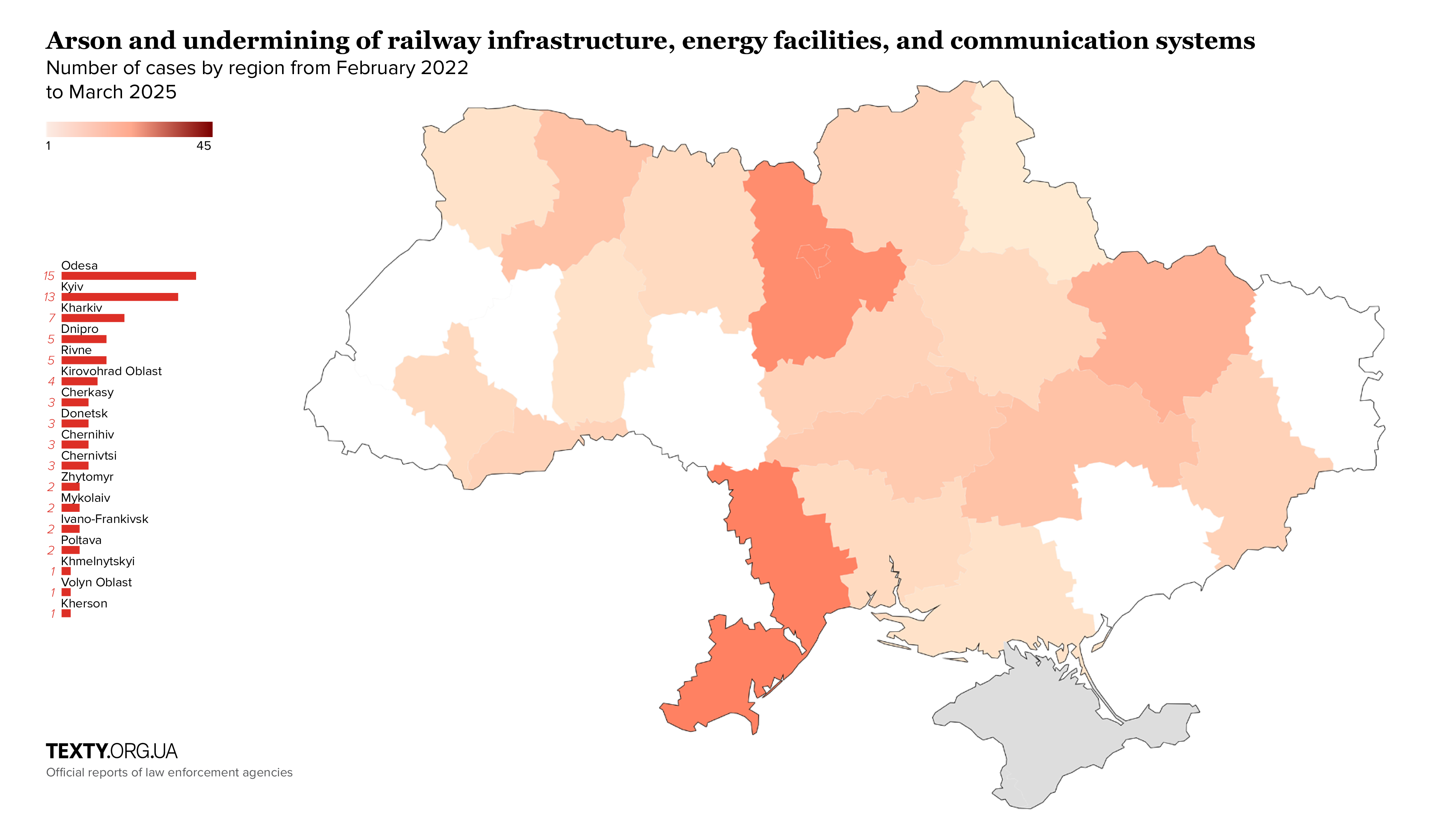
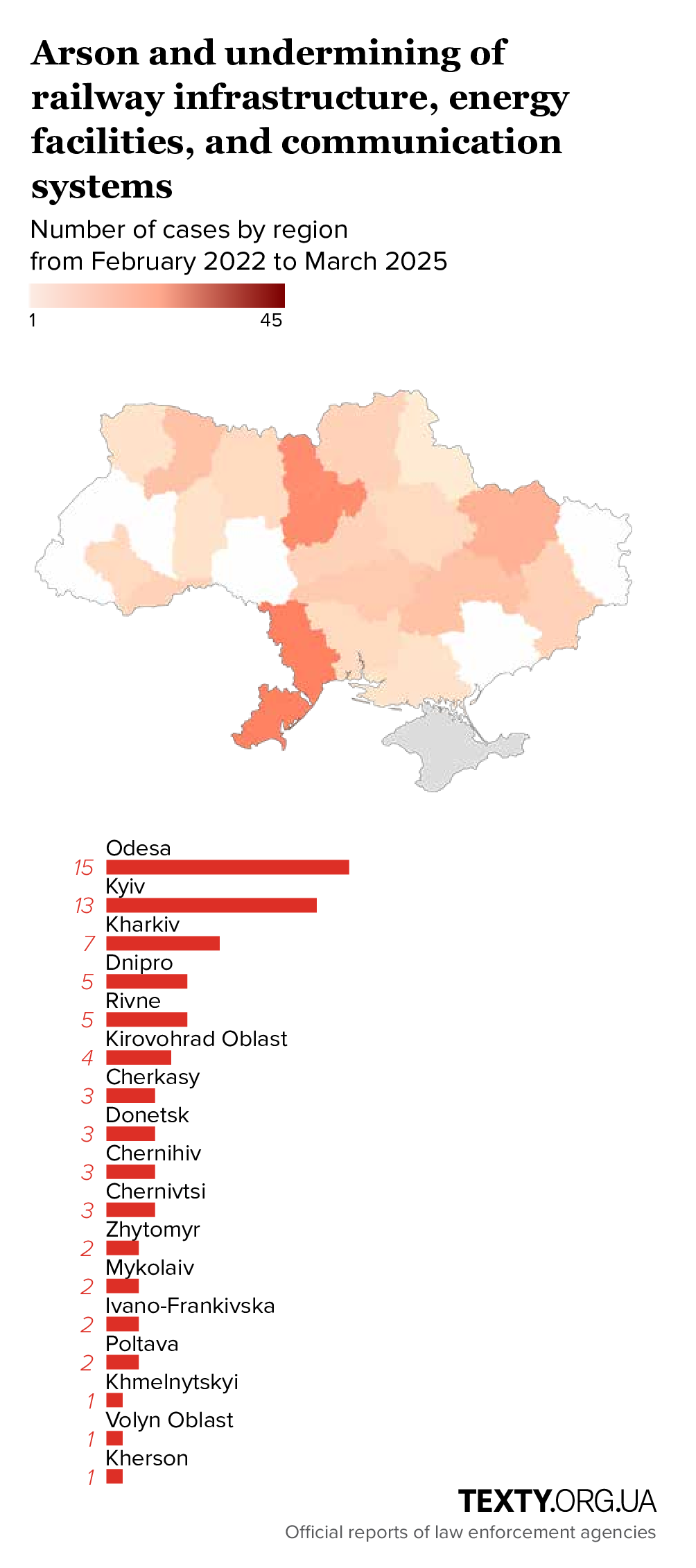
The largest number of terrorist attacks here are on the infrastructure of Ukrzaliznytsia. The most favored terrorist targets are relay cabinets on railroad tracks. This is understandable: they are easy to access, they can be located at a certain distance from crowded places, and you can't post guards at every relay cabinet. At the same time, they are a key part of the railroad infrastructure, as they ensure the system's efficiency.
How it works
The most interesting thing is that the Russians didn't have to invent anything. The current scheme of recruitment and organization of terrorist attacks almost exactly copies the standard scheme of drug dealers, when recruitment of drug couriers and drug sales through well-known "bookmarks" takes place online. Even though there is a real chain from production to consumption, each of its links does not communicate directly with the other.
The Russian scheme of recruiting and organizing terrorist attacks copies the standard scheme of drug dealers almost one-to-one.
For example, in a standard drug dealer scheme, a "chemist" cooks a narcotic substance and then leaves it in a prearranged place. From there, a courier picks it up and distributes it to the "bookmarks." Thus, neither the "chemist," the courier, nor the user himself communicate with each other and do not see each other.
This is how the scheme with terrorist attacks works today. Customers in Russia first find a person who makes explosives. The explosives are left in a special city, where they are picked up by the perpetrator of the attack.
Let's look at the example of the February 5 terrorist attack in Khmelnytskyi. Law enforcement detained two of its perpetrators: A 17-year-old student and a drug addict. They did not know each other - all communication occurred through a familiar curator. The improvised explosive device was made by an underage student who had some basic skills in this field. He stuffed the explosive with nuts and rebar scraps to maximize the damage and equipped it with a cell phone for remote detonation.
The student then placed the IED in hiding and passed the geolocation to his FSB supervisor. He, in turn, sent the geolocation to a drug addict who was supposed to carry out the attack. However, the latter suspected something and handed the explosives to a random courier who knew nothing about it, who brought them to the TCC. As a result, people were killed and injured, including the courier himself.
Here, we can see one obvious message from the Russian curators: they do not feel sorry for the performers. They can be remotely detonated along with explosives or sent to carry out one-time arson attacks, after which they are detained by law enforcement. It seems that even drug dealers do not have such a cynical attitude toward their own mercenaries. The Russians are firmly convinced that others will replace some of the perpetrators tomorrow.
Telegram is a limitless recruitment tool in the hands of Russians
And the Russians have specific reasons for this. First, they have a limitless tool for recruiting people who want to make money by taking the lives of others and themselves. The name of this tool is Telegram.
In addition, the Russians are at war with Ukrainians as a nation and do not make any concessions to traitors.
A terrorist network
Telegram has long since turned into a real paradise, primarily for drug traffickers. The walls of houses and fences are covered with the addresses of Telegram channels, where you can easily find a "bookmark" with any narcotic substance. Naturally, our "friends" from the FSB and other Russian agencies could not pass by such opportunities and began to use Telegram to recruit terrorists.

Texty.org.ua has reviewed hundreds of news stories about the detention of terrorists. In most of them, Telegram is mentioned as the main communication tool in their recruitment process. Over and over again, in the reports of Ukrainian law enforcement agencies, one can read that the perpetrators of the terrorist attacks "were looking for easy money in telegram channels."
The conclusion here is unequivocal: the need for a complete ban on telegrams in Ukraine is not just ripe, it should have been done long ago. The arguments in favor of its continued operation cannot be compared to the fact that Russian terrorists are able to directly address minors in Ukraine.
The situation is similar to that of a car with a loudspeaker driving down the street, broadcasting Russian propaganda and calls for terrorist attacks at full volume. At the same time, we try to interrupt them at home by playing the violin. It is in the Telegram that both Russian propaganda and calls for terrorist attacks are put on a real massive stream, crippling human lives, including children's lives.
In the Telegram, both Russian propaganda and calls for terrorist attacks are put on a real massive scale
Working with young people
Of course, banning one social network will not change the situation with youth education. Ukraine's eternal problem is that we have not learned how to work effectively with children and raise them as Ukrainian citizens with national and democratic values.
Read also: "Falcons," Street Raids and Clubs with a "Low Threshold." How the Czech Republic Takes Care of Teenagers
We have a vicious circle: Parents do not want to, but rather simply cannot, explain to their children exhaustively and clearly what it means to be a patriot and a citizen of their country, leaving this task to the school. In Ukrainian education and among educators, we often see the traditional Soviet formal approach: let's learn a poem about how much we love our country, get a grade for it, and forget about it the next day.
That's why social media is often the only way to explain basic things to children. Modern education can no longer explain to children that information from social networks should be filtered and treated critically.
But the state is quite capable of telling school, college, or university students what will happen to them if they agree to a terrorist attack for money. With the demonstration of photos of the bombed perpetrators and video from the courtroom when the traitors are being read the verdict.
The Ministry of Education, in cooperation with the Ministry of Internal Affairs and the Security Service of Ukraine, is simply obliged to hold such classes, attended by a representative of the police or special services, in every classroom where children of vulnerable age study. Then, most students and parents will be aware of the danger and will be more attentive to various suspicious offers.
But there are no steps in this direction. No one talks to children in schools about this in class. Instead, the Ministry of Education and Science has issued extremely vague recommendations for parents, who also know nothing about the methods of recruiting teenagers through telegrams or that this is even happening.
In other words, the state has again acted formally and shifted responsibility to someone else.

